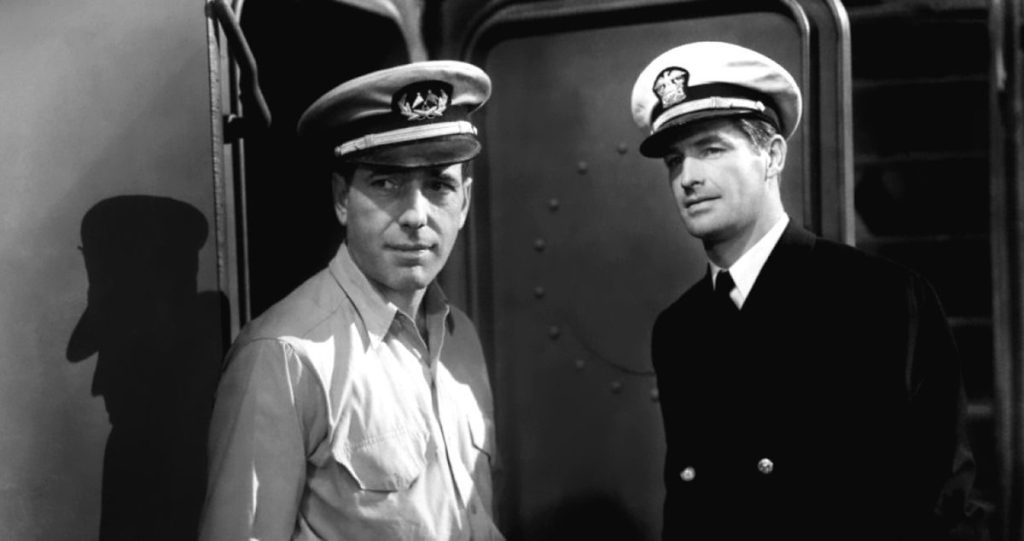I am never quite sure how to take propaganda films. They can have a world of talent behind them, but their ultimate political purpose always lurks behind the surface. Art and social commentary are never the goal with them, and that always leads them to feel compromised to one degree or another. Occasionally they can be quite interesting, if the filmmaker’s politics vary from those who commissioned the film. Kurosawa Akira’s The Most Beautiful (1944) is a great example of that – ostensibly encouraging the Japanese people to work for the war effort, but maintaining an underlying humanity that challenges its own superficial assumptions. Another interesting example, albeit for different reasons, is Action in the North Atlantic: a 1943 American film intended to celebrate the merchant marines’ war effort.
The film’s credited director was Lloyd Bacon, but when his contract with Warner Bros expired mid-shoot he was replaced with Byron Haskin and Raoul Walsh. It was greenlit on the assumption that Edward G. Robinson and George Raft would star; it was instead produced with Raymond Massey and Humphrey Bogart.
An American oil tanker commanded by Captain Steve Jarvis (Massey) is sunk by a German U-boat in the mid-Atlantic. After Jarvis and his crew abandon ship, they drift on life rafts for days before being rescued. After a brief convalescence, Jarvis and his crew – including First Officer Joe Rossi (Bogart) – assume control of the cargo ship SS Seawitch to deliver war supplies to the Russians in Murmansk.
Screenwriter John Howard Lawson was responsible for giving the film a very heavy pro-union attitude, and indeed the Maritime Union features prominently in the film’s middle section. At the time this was mildly controversial but hardly newsworthy: the merchant marines were in real life heavily and proudly unionised. Upon the film’s release, studio head Jack Warner was even presented with a Merchant Marine Victory Flag in a special presentation. By war’s end, however, the film’s politics – union-supporting, and amenable to Soviet Russia – rapidly became untenable. By 1947 – just four years after Action in the North Atlantic‘s release – John Howard Lawson was among the first Hollywood screenwriters to be blacklisted for alleged communist sympathies.
Technically it is a well-staged and executed picture. War-time restrictions made location shooting impossible, and so its various action sequences are achieved with a combination of studio shoot, stock footage, and some really quite impressive model work. There is a particular tension to scenes that pitted Jarvis’ crew against that of a lurking U-boat. Strikingly, while there is dialogue among the German crew it is performed without subtitles: context provides all of the translation the audience needs.
An ensemble of characters allows the film to indulge in archetype without resorting to stereotype. They are each played very effectively, and with a minimum of extravagance. It is a film intended to brighten American opinions about the war, and character depth was simply surplus to requirements. It is efficient work from the likes of Alan Hale Sr, Julie Bishop, Ruth Gordon, Sam Levene, and others.
Action in the North Atlantic fell into relative obscurity once it fulfilled its purpose, and its somewhat uncomfortable politics kept it largely off screens in the subsequent years and decades. Today it may be watched as an effectively entertaining and efficiently produced war film, with a fascinating political edge of its own.





Leave a comment